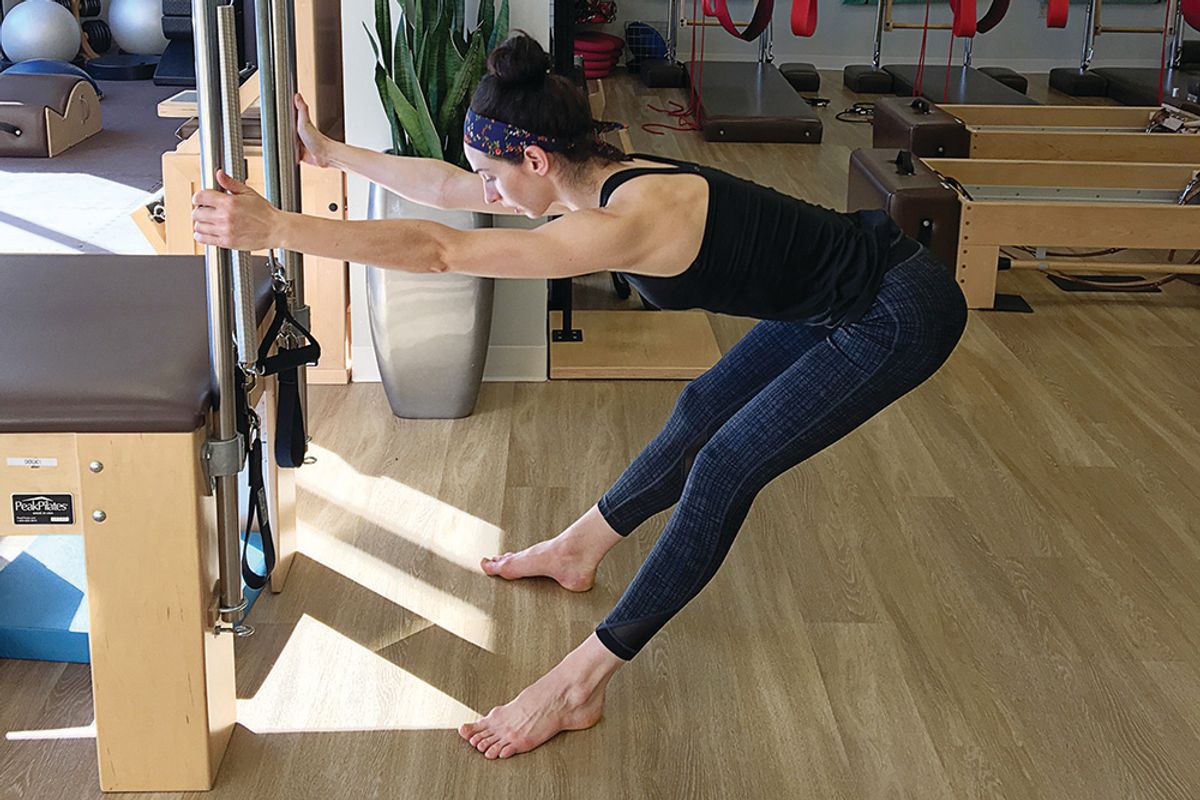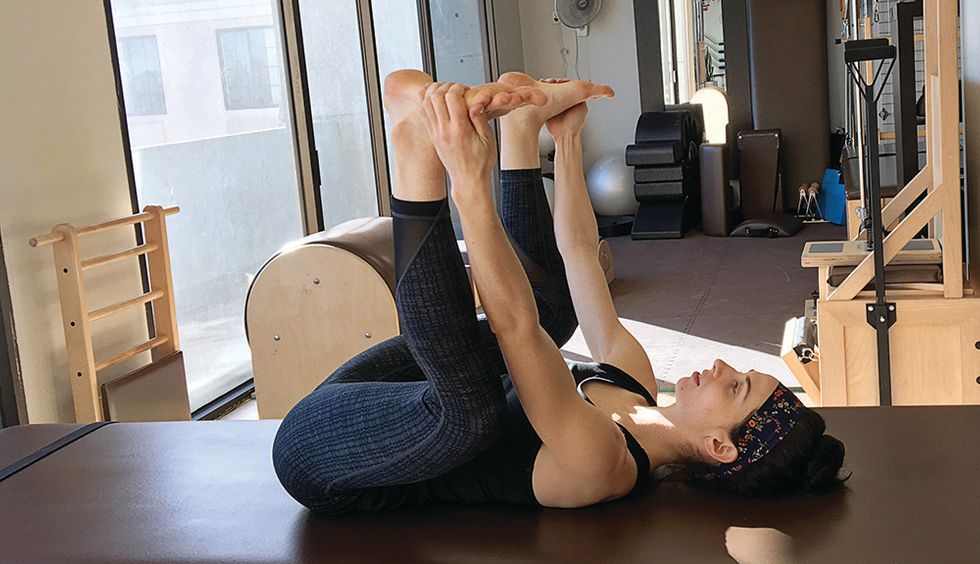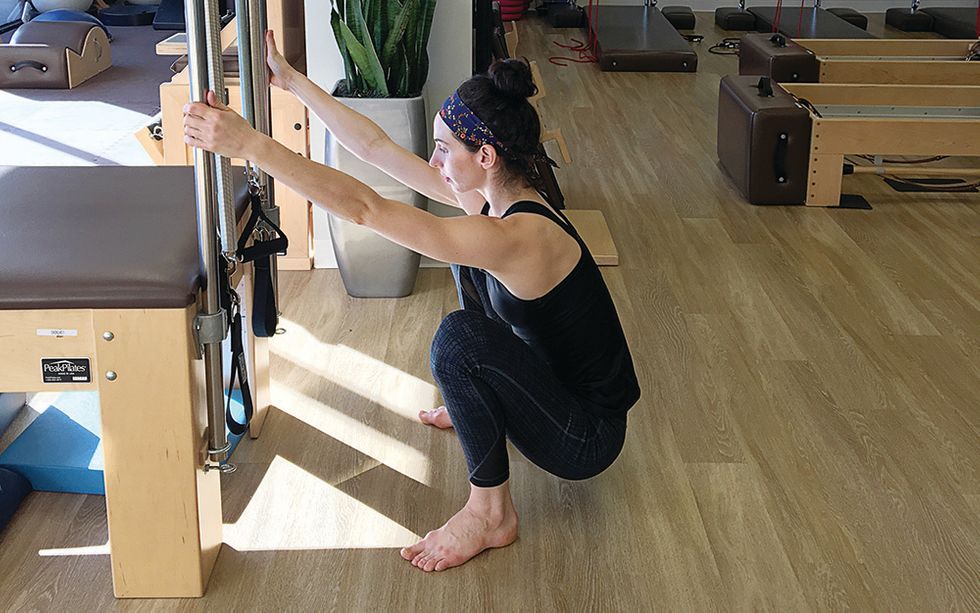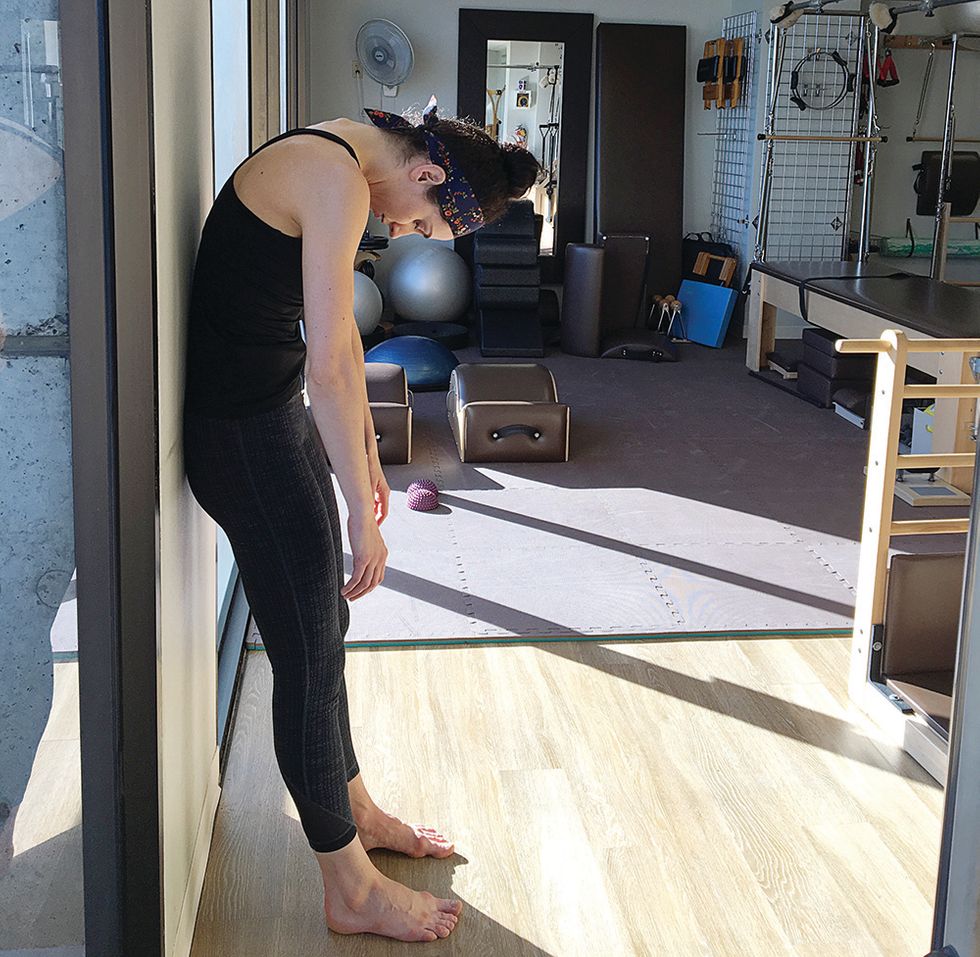
Working as the physical therapist for the Atlanta Ballet, Amanda Blackmon often sees dancers who report hip pain, high hamstring strain or sacroiliac sensitivity and soreness. And while there are a host of reasons for such pains, including the often discussed gripped glute and hip flexor muscles, there is one overlooked culprit: dysfunction in the pelvic floor muscles. Though pelvic floor health has become a hot topic for women postpartum who often need to strengthen weakened and compromised muscles, there is a different set of concerns when it comes to athletes and dancers. “I often see a hypertonic pelvic floor,” says Blackmon, “meaning the muscles are overactive or gripped and tight. Also, the obturator internus muscle is an external rotator that is also part of the pelvic floor. When that is gripped (particularly in turnout), it can refer pain to several places around the hip and high hamstring.”
A healthy pelvic floor can both contract and relax
The pelvic floor muscles form a figure eight underneath the pelvis, supporting the bladder, bowels and uterus in addition to working as part of your core muscles alongside the diaphragm, abdominal and spinal stabilizers. A healthy pelvic floor is able to both contract and relax, moving in tandem with the diaphragm as you breathe. “The pelvic floor should naturally turn on when a dancer lands a jump, to protect from downward pressure that could otherwise result in incontinence,” says Blackmon. “Instead, a lot of dancers are just turning on the glutes and overworking their abdominals and adductor muscles.”
Imagine a balloon
One reason for this may be the prevalence of “squeezing” or “in and up” cues in dance and movement modalities. Another reason just might be a lack of awareness of how these muscles best function and what it really feels like when they are working. Blackmon prefers that dancers think of an image of a balloon to understand how their diaphragm, abdominal muscles, pelvic floor and spinal stabilizers create the full container that is their core. The diaphragm and pelvic floor muscles should move in the same way at the same time as dancers breathe, while the spinal stabilizers and abdominal muscles ideally provide posture and balance for the front and back of the body. And like a balloon, too much pressure from any side will cause an imbalance. In dancers, Blackmon usually sees imbalance coming from a few places: a gripped or overactive pelvic floor that is not able to properly contract when needed; a diaphragm that is stuck, due to held breath; and an overactive rectus abdominis, which can exert too much downward pressure on the pelvic floor, making it impossible to engage or lift up.
The solution, in any case, is to learn how to fully relax and fully contract the pelvic floor without overcompensating with bigger, stronger muscles. While Blackmon does not always discuss these highly intimate muscles with younger dancers, she does offer the following exercises as a way to help dancers find more awareness. Identifying how to contract and release these muscles, as well as orienting the ribcage and pelvis in the most advantageous alignment for proper posture, can help keep the “balloon” balanced and maintain the integrity and functionality of a dancer’s pelvic floor.
Happy Baby

Ashley Wegman, Atlanta Ballet; courtesy of the author
Breathing in this abducted position allows a dancer to find their pelvic floor muscles without being confused by overactive adductor, gluteus or abdominal muscles. The diaphragm is like a plunger that resides right underneath your lungs. When you breathe in, your lungs expand, and the diaphragm and pelvic floor both drop downward (this is when the pelvic floor should relax). When you exhale, they both lift up (this is when the pelvic floor should contract).
1. Lie on your back with your legs apart in the air, knees bent at a 90-degree angle. Hold onto the outside edges of your feet.
2. Aim to reach your sitz bones away from your head so you can find a lengthened spine and the most neutral pelvis possible.
3. As you exhale, feel a gentle pulling of the navel to spine and a relaxation of your pelvic floor. Your pelvis should stay stable and neutral during the contraction of this muscle.
4. As you inhale, allow your belly to rise gently. You can try bearing down during the inhale to drop your pelvic floor muscles (just as you would when you need to relieve bladder or bowels). Take 10 complete breaths, alternating between releasing and contracting.
Deep Sumo Squat

Ashley Wegman, Atlanta Ballet; courtesy of the author
This supported squat is a nice stretch for dancers and allows any gripped pelvic floor muscles the chance to release and can help relieve constipation caused by such gripping. “In Asian cultures, this is a posture for naturally relaxing in order to go to the bathroom,” says Blackmon.
1. In a wider than hip-width stance, feet and knees slightly turned out, hold on to a door frame or other stable surface at hip level.
2. Allow your knees to bend and your hips to sink into a deep squat.
3. Take a few deep breaths here and think of dropping or lowering the pelvic floor.
4. To stand up, send your weight back into your heels as you stretch your knees (creating a sort of flat back, hamstring stretch position) before bringing your torso up over your legs. This works to prevent gripping to stand up.
5. Repeat 5–10 times.
Roll Downs on the Wall

Ashley Wegman, Atlanta Ballet; courtesy of the author
A healthy pelvic floor works in tandem with the diaphragm in a pumping action. For dancers, inhaling also enables spinal extension (aka arabesque) and quite often a dysfunctional pattern can arise where the ribcage becomes stuck in extension if the pelvic floor is gripped and not working properly. Therefore, finding flexion in the thoracic spine can help get the diaphragm and pelvic floor moving functionally again between contraction and release.
1. Stand with your back against a wall, feet about 10 inches away in front of you. Allow negative space for your cervical and lumbar curves away from the wall.
2. On an exhale, begin rolling your head forward and down toward the ground, peeling your spine off the wall. Keep your hips and the lowest part of your ribcage connected to the wall.
3. On an inhale, press down through your feet and restack your spine tall against the wall. Repeat 5–10 times, taking care not to overtuck your chin or your hips so that you can focus on curling through your ribcage.
The Mind/Body Connection
“There is a personality component,” says Blackmon. “A gripper is a gripper, and this kind of anxiety-prone, Type A personality can exhibit itself in holding the breath, clenching the jaw and gripping the pelvic floor.” In addition to the exercises, finding ways to relax the mind and manage stress may be key to a healthy and functioning pelvic floor.



